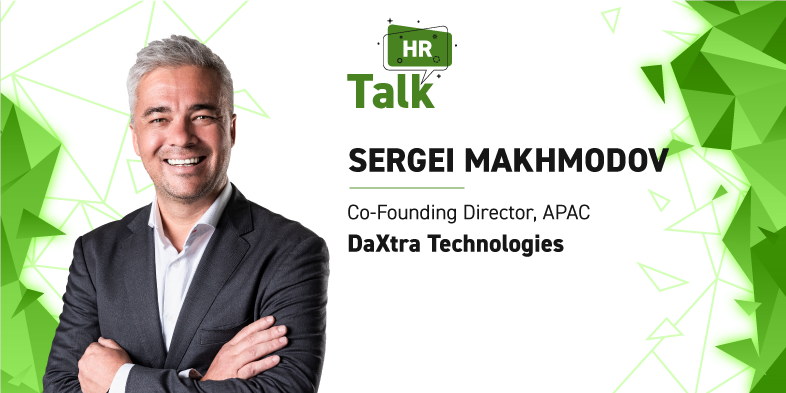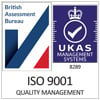Sergei Makhmodov recently spoke with Toolbox HR. DaXtra's co-founding director views AI as an intelligent automation solution for the recruitment sector.
He believes that AI in recruitment will prove to be a turning point for recruiters due to the COVID-19 pandemic. In this edition of HR Talk, Makhmodov talks about how this AI-led candidate assessment process will look like in a post-pandemic world.Makhmodov also discusses the unique approaches SMBs and start-ups can take with AI to improve their talent acquisition efficiencies. He also shares how companies can simplify their recruitment processes and hire the most qualified and relevant candidates for various open positions in the post-pandemic world.
Key takeaways on how AI in recruitment can transform hiring post-COVID-19:
- Ensure your applicant tracking system has open APIs and can link with compatible automation solutions.
- Keep an eye on AI-based chatbots and candidate engagement tools in the coming months.
- Stay engaged with the talent community to show you are a company that cares.
Here is the edited transcript from the exclusive interview:
1. Due to today’s unforeseen circumstances, we have been forced into a new, almost completely digital reality. Which tools can HR rely on to evaluate the onboarding process and find the right talent?
With the current disruption due to the COVID-19 pandemic, we are seeing some immediate and substantial changes. Companies most severely affected by the downturn are understandably cautious about spending money, but even those with fewer jobs to fill are most likely handling increased volumes of applications lately. In any such crisis, the situation flips. Now, we are in a market where we have an abundance of resumes, candidates, and jobseekers but not enough vacant jobs. The benefit of staying in touch with your talent community during such a period is that candidates will, later, be happier to engage with a company that has shown it cares. Also, keep in mind that some of those candidates may one day become clients. It is important to try and capitalise on this. The question is, how do you do this if your own workforce has shrunk? That is where Intelligent Automation (IA) can help.
2. Finding the right candidate amid mass hiring in a post-recession world will only compound, how can AI transform recruiting in a post-recession world? What would this AI-led candidate assessment process look like?
AI-based products can deliver impressive efficiency gains for recruiters in the increasingly tough game of “who puts the right CV on the hiring manager’s desk first?” Features such as “watchdog” auto-searches automatically and delivers highly relevant matching profiles directly to the recruiter’s inbox. One-click matching from jobs on the applicant tracking system (ATS) - or even from a vacancy URL on your client’s site - can bring extra efficiencies and a 50-60% reduction on the lead times required to come up with a shortlist of suitable candidates.
Another major bottleneck in the recruitment process is keeping your database up to date. Candidate data is like a carton of milk, it ages quickly, turning talent databases into “candidate graveyards”. These expired talent databases force recruiters to prefer paid job boards for candidate sourcing. This is a ridiculous waste of effort and money.
We are seeing that 60% to 80% of the candidates who apply to recruiters’ jobs posted online are, in fact, already on their databases. On one hand, this is great because you are getting updates, but on the other hand, without an accurate automated de-duplication these candidates just end up as duplicate records on the database. On top of that, because candidate data is not routinely updated, recruiters often do not even search their databases, preferring to pay third parties like job boards or LinkedIn to download more recent profiles of the same candidates they already have.
This problem can be addressed. Our clients are reporting significant shifts in the numbers of placements that come from their own databases. From as low as 5-10% to as high as 60-70% after the solution is in place. And, if you do the math, it is quite staggering how much money can be saved!
3. What are some of the ways start-ups and SMBs can address the challenge to develop unique approaches to sourcing and screening applicants to improve talent acquisition efficiencies?
If you do not already have a good (HR) tech stack, invest into one now. This is a good time as you may get better deals than in a healthier economy. Ensure your ATS has open APIs and can seamlessly link with a wide range of compatible automation solutions for parsing, matching, analytics, candidate engagement tools, and more. No single vendor can offer you everything you need out of the box, so you need to have a platform that can integrate with anything you may require via open APIs.
Then you need to analyse your talent acquisition funnel and fix any “leaks” and deficiencies in it. Statistically, only 10% of online applications on corporate career sites get completed by jobseekers. This is a staggering 90% drop off rate on desktops, which is a very high price to pay! With mobile career sites the situation is even more dire.
Recruiters must tap into solutions designed specifically for such candidate-facing scenarios to help jobseekers get hired. With the DaXtra web plugin in place, applicants can register in seconds and their resumes can match instantly, making this previously tedious task more straightforward, simple, and effective. We have seen cases where companies reduced the average time to apply on their websites from 30 minutes to just a couple of minutes. On top of that, the application completion rate increased by 300% because applicants stopped dropping off.
4. Which are the core components in the recruitment cycle where AI could be truly transformative?
Starting from vacancy creation and all the way to hiring there are several sub-processes that AI can transform and automate. Apart from advanced matching and parsing, we are witnessing an uptake in interest toward AI-based chatbots and candidate engagement tools. This is likely to grow significantly in popularity in the coming months, along with “autonomous staffing”. The traditional “bricks and mortar” recruitment model will start giving way to an automated approach as more hi-tech staffing firms and talent acquisition departments are increasingly filling positions with minimal human involvement.
5. Can companies simplify their recruitment processes and hire the most qualified and relevant candidates for various open positions in the post-pandemic world? How do these companies employ AI to perform these time-consuming and critical tasks?
Naturally, there is a vital human element in the hiring process where someone needs to meet and interview candidates face to face. This is likely to stay for more critical roles. But as AI and IA are progressing at such a rapid pace, we will be seeing more and more positions filled autonomously in the coming years.
6. How can the right HR tech help businesses and organisations to scale back up to success?
Hiring can be extremely competitive and as the world starts coming back to normality, recruiters will try to rehire everyone and fill those vacant positions, creating a deficit of talent. Since finding the right candidate and persuading them to take the role is the most challenging and time-consuming part in the hiring process, any errors can be very costly, especially when the role is urgent. The recruiter who is skilfully engaged with their talent community and is armed with the right tools, will be the first to find the right candidate to fill the position in this incredibly competitive industry.



